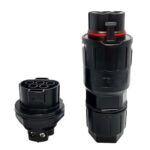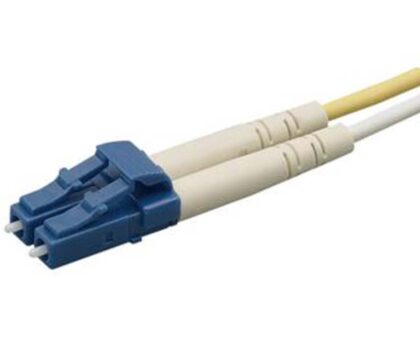Robotics and drones have revolutionized various industries, ranging from agriculture and healthcare to manufacturing and logistics. These technologies are heavily dependent on connectors to function effectively. Connectors are devices that join two or more components, allowing them to communicate and share data. There are different types of connectors available, and each has its own set of advantages and disadvantages. In this article, we will explore four types of connectors for robots and drones: physical connectors, electrical connectors, fiber optic connectors, and wireless connectors.
Physical Connectors
Physical connectors are the most commonly used type of connectors in robotics and drones. They are physical devices that allow two or more components to be mechanically linked together. Physical connectors are commonly used to connect power sources, sensors, motors, and other mechanical components. Some examples of physical connectors used in robotics and drones include USB connectors, Ethernet connectors, and HDMI connectors.
Physical connectors have good reliability. They provide a strong and secure connection that is resistant to vibration, shock, and environmental factors such as dust and moisture. Physical connectors are also easy to install and maintain, and they are generally less expensive than other types of connectors.
However, physical connectors also have some disadvantages. They can be bulky and heavy, which can limit the mobility of robots and drones. Physical connectors can also be difficult to use in tight spaces, and they require physical contact to establish a connection.
Despite these limitations, physical connectors remain an important part of robotics and drones. They are commonly used in applications such as drones that require a reliable, secure, and durable connection.
Electrical Connectors
Electrical connectors are another type of connector commonly used in robotics and drones. They are designed to connect electrical wires, cables, and other electrical components. Electrical connectors come in various types and sizes, including circular connectors, rectangular connectors, and coaxial connectors.
Eelectrical connectors offer many versatility. They can be used to connect a wide range of electrical components, from sensors and motors to batteries and power sources. Electrical connectors are also compact and lightweight, which makes them ideal for use in drones and other small robots.
However, electrical connectors also have some disadvantages. They can be less reliable than physical connectors, and they are more susceptible to interference from external sources. Electrical connectors can also be more complex to install and maintain, which can increase their overall cost.
Despite these limitations, electrical connectors are widely used in robotics and drones. They are commonly used in applications such as sensor networks, motor control, and battery management.
Fiber Optic Connectors
Fiber optic connectors are a type of connector that use optical fibers to transmit data. They are commonly used in high-speed data transmission applications, such as telecommunications and data centers. Fiber optic connectors are also becoming more popular in robotics and drones, as they offer several advantages over other types of connectors.
Fiber optic connectors have good high-speed data transmission capabilities. They can transmit data at much higher speeds than electrical connectors, making them ideal for applications that require real-time data transmission. Fiber optic connectors are also immune to electromagnetic interference, which makes them more reliable in noisy environments.
However, fiber optic connectors also have some disadvantages. They can be more expensive than other types of connectors, and they require specialized equipment to install and maintain. Fiber optic connectors are also less flexible than other types of connectors, which can limit their use in certain applications.
Despite these limitations, fiber optic connectors are becoming more common in robotics and drones. They are commonly used in applications such as high-speed data transmission, remote sensing, and image processing.
Wireless Connectors
Wireless connectors are a type of connector that use radio waves or other wireless technologies to transmit data. They are becoming more popular in robotics and drones, as they offer several advantages over other types of connectors.
Wireless connectors have good flexibility. They allow robots and drones to communicate with each other without the need for physical connections. Wireless connectors are also lightweight and compact, which makes them ideal for use in small robots and drones.
However, wireless connectors also have some disadvantages. They can be less reliable than physical or fiber optic connectors, as they are susceptible to interference and signal loss. Wireless connectors also require additional power, which can limit the battery life of robots and drones.
Despite these limitations, wireless connectors are becoming increasingly popular in robotics and drones. They are commonly used in applications such as autonomous vehicles, remote monitoring, and swarm robotics.
Conclusion
Connectors play a vital role in the functionality of robots and drones. Each type of connector has its own advantages and disadvantages, and it’s important to choose the right type of connector for your application. Physical connectors offer reliability and durability, while electrical connectors offer versatility and compactness. Fiber optic connectors provide high-speed data transmission and immunity to interference, while wireless connectors offer flexibility and mobility.
As robotics and drone technology continue to evolve, so too will the types of connectors used. New advancements in connector technology, such as 5G connectivity and wireless power transmission, will continue to shape the future of robotics and drones.
Whether you are designing a drone for aerial photography or developing a robot for manufacturing, the choice of connector will be a crucial factor in determining the success of your project. By understanding the advantages and disadvantages of different types of connectors, you can make an informed decision and ensure the optimal performance of your robot or drone.




